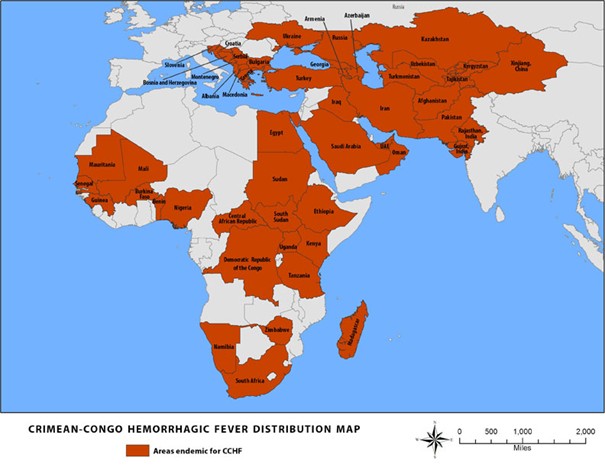Crimean-Congo haemorrhagic fever
Crimean-Congo haemorrhagic fever (CCHF) is a viral infection transmitted through the bite of an infected giant tick (Hyalomma tick) or through direct contact with the blood or bodily fluids of infected humans or animals.
Most people experience no or mild symptoms. Some develop symptoms 1 to 3 days (up to 13 days) after the tick bite, such as:
-
high fever
-
nausea, abdominal pain and vomiting
-
headache, dizziness and sensitivity to light
-
joint and muscle pain
In very rare cases, there is a life-threatening course with failure of various organs and bleeding.
The risk to travellers is very low.
Risk groups include livestock farmers, slaughterers, veterinarians and hunters who work with infected animals, or healthcare providers who come into contact with infected patients without protective equipment.
Treatment is mainly supportive, in research settings, antiviral (Ribavirin) medication is sometimes given.
Prevention
Protection
Protect yourself against tick bites.
Infected persons
Avoid contact with blood and other bodily fluids from people who are (potentially) infected.
Animals
Avoid contact with animals (including livestock).
Vaccination
There is no vaccine available.
In case of symptoms
Seek medical advice if you suffer any symptoms.

